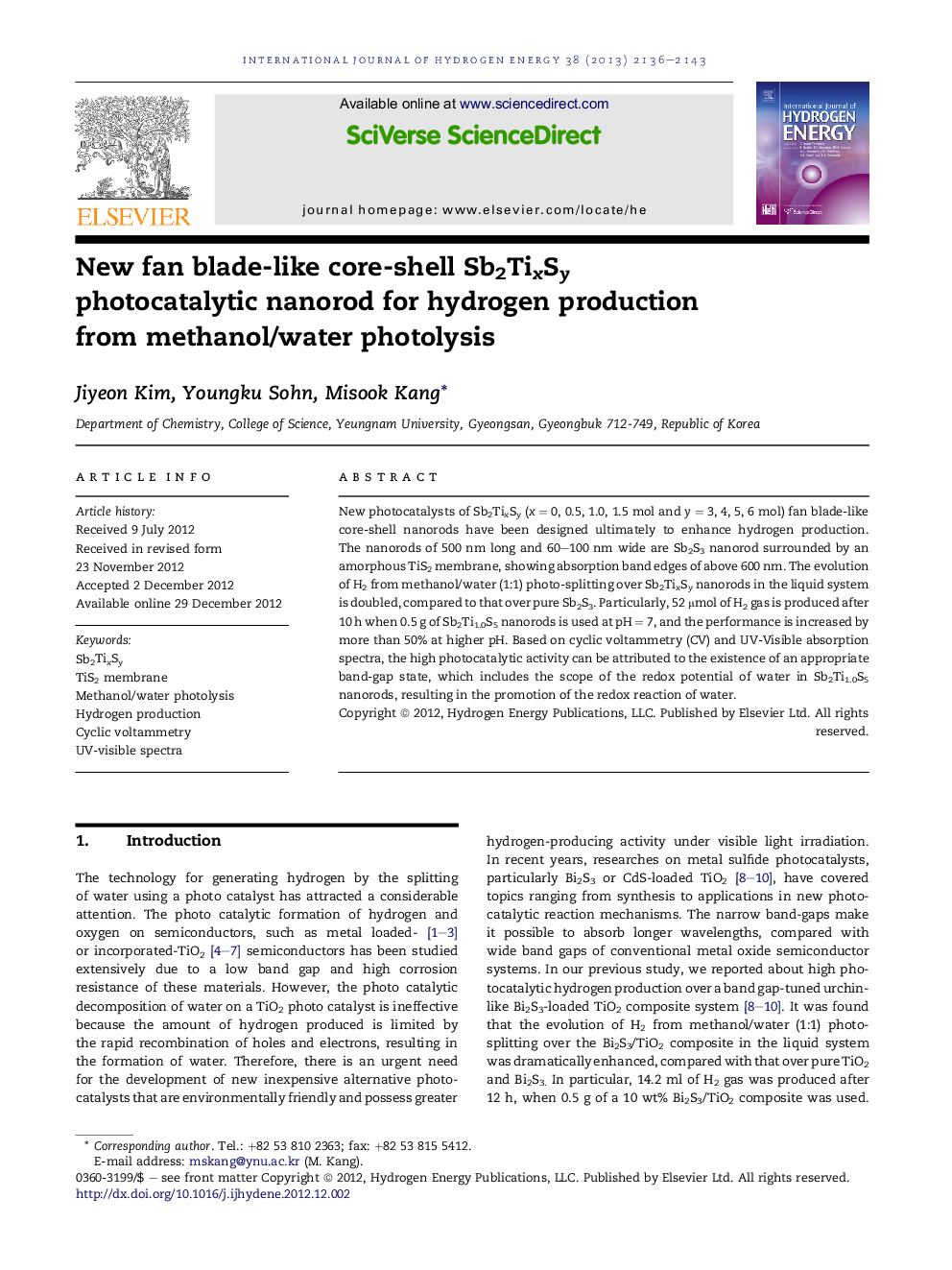| Article ID | Journal | Published Year | Pages | File Type |
|---|---|---|---|---|
| 1274076 | International Journal of Hydrogen Energy | 2013 | 8 Pages |
New photocatalysts of Sb2TixSy (x = 0, 0.5, 1.0, 1.5 mol and y = 3, 4, 5, 6 mol) fan blade-like core-shell nanorods have been designed ultimately to enhance hydrogen production. The nanorods of 500 nm long and 60–100 nm wide are Sb2S3 nanorod surrounded by an amorphous TiS2 membrane, showing absorption band edges of above 600 nm. The evolution of H2 from methanol/water (1:1) photo-splitting over Sb2TixSy nanorods in the liquid system is doubled, compared to that over pure Sb2S3. Particularly, 52 μmol of H2 gas is produced after 10 h when 0.5 g of Sb2Ti1.0S5 nanorods is used at pH = 7, and the performance is increased by more than 50% at higher pH. Based on cyclic voltammetry (CV) and UV-Visible absorption spectra, the high photocatalytic activity can be attributed to the existence of an appropriate band-gap state, which includes the scope of the redox potential of water in Sb2Ti1.0S5 nanorods, resulting in the promotion of the redox reaction of water.
Graphical abstractFigure optionsDownload full-size imageDownload as PowerPoint slideHighlights► New photocatalyst of Sb2TixSy fan blade-like core-shell nanorod has been designed. ► The Sb2S3 nanorod was surrounded by an amorphous TiS2 membrane. ► 52 μmol of H2 gas is produced when 0.5 g of Sb2Ti1.0S5 nanorods is used at pH = 7. ► Photocatalytic activity can be attributed to the appropriate band-gap state.
